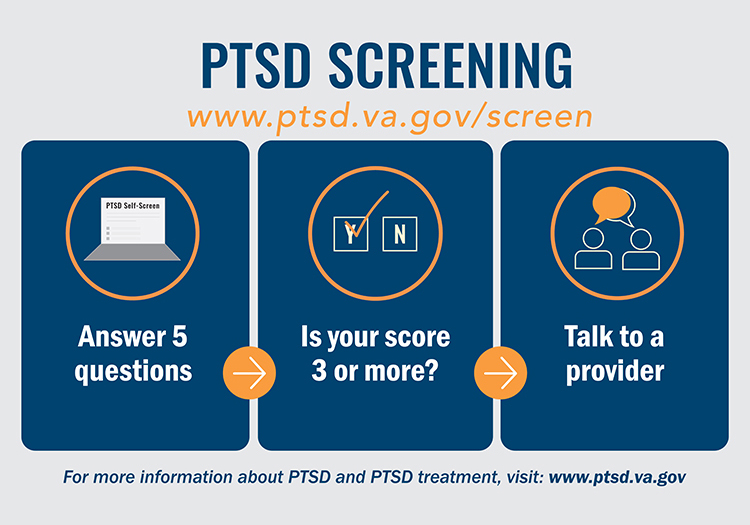About PTSD
 Post-Traumatic Stress Disorder (PTSD) can occur after experiencing or witnessing a terrifying event. Symptoms include, memories of the event, flashbacks, re-living the event, changes in thinking, mood and reactions, and attempts to avoid the people, thoughts and places connected to the experience.
Post-Traumatic Stress Disorder (PTSD) can occur after experiencing or witnessing a terrifying event. Symptoms include, memories of the event, flashbacks, re-living the event, changes in thinking, mood and reactions, and attempts to avoid the people, thoughts and places connected to the experience.
PTSD can range from being mildly disruptive to severe, and can affect functions in daily life. Developing the disorder depends upon a range of factors including the traumatic event’s intensity, a person’s proximity to the event, and how much control they had in responding to the event and its aftermath. If an individual was seriously injured and/or believed their life was in danger, there is an increased risk for developing the disorder.
PTSD is a treatable disorder; seeking treatment early can improve recovery. To learn more, visit the Department of Veterans Affairs’ National Center for PTSD
If you think you might have PTSD, consult with your doctor about treatment options. You may want to consider taking this brief screening tool from the ADAA or from the US Department of Veterans Affairs. A screening is intended to identify problems and help the professional arrive at an initial conclusion for possible further development or treatment.
It is likely that your doctor will administer a new screening or follow up on your answers to the first one to see if your feelings about the answers are the same or if they have changed. Remember, only trained professionals are able to administer a complete assessment. They can diagnose you with PTSD or tell when symptoms are related to a different condition. You should make a point to discuss any symptom that is causing you difficulty in your everyday life – no matter what it might be. If your symptoms are severe, your doctor may recommend a different course of action than if they are minor.
Treatments for PTSD
There are a number of treatment options for PTSD. Research has shown that several trauma-focused methods can be most effective including:
Eye Movement and Desensitization Reprocessing (EMDR) promotes recovering from trauma and other disturbing experiences. Healing is achieved through the use of eye movements (or other stimuli) that enable the brain to effectively process distressing memories so that the person no longer feels as reactive or triggered in the present.
A theoretical basis of EMDR is that PTSD symptoms result from insufficient integration of sensory, cognitive, and other elements of the traumatic memory.
While the original trauma is not “forgotten”, it can be recalled with less distress; healing from the event can then proceed. In addition to trauma, EMDR therapy is applicable for many mental health conditions including anxiety, phobias, grief and loss, depression, eating disorders, sleep disturbance, and addictions.
Cognitive Processing Therapy (CPT) focuses on changing negative patterns of thinking about the trauma and the associated distress.
Prolonged Exposure (PE) involves the gradual confrontation of the traumatic memory, including the thoughts, objects, environments and situations that remind the person of the trauma. The goals include shifting the negative thoughts about the trauma and controlling anxiety without having to avoid or escape it.
Medication options include the use of Selective Serotonin Reuptake Inhibitors (SSRIs), such as Prozac or Zoloft, and the Serotonin and Norepinephrine Reuptake Inhibitors (SSNIs), such as Pristiq and Effexor. Consult with your doctor to see if medication is right for you.
Exercise and Meditation/Mindfulness is helpful in managing the distressing experience of living with PTSD. Even moderate amounts of exercise can boost energy and well-being, improve sleep quality and self-esteem, and help alleviate depression symptoms that sometimes occur.
Meditation and Mindfulness approaches can also help by shifting a person’s perception of their experiences.
This information including all links, videos and other materials are intended for information purposes only and should not be considered a substitute for seeking the advice of a licensed healthcare practitioner such as a doctor, social worker or psychologist). If you are severely depressed and have any thoughts of suicide, call 911 or the National Suicide Prevention Lifeline at 1-800-273-8255.

 PTSD Screening
PTSD Screening